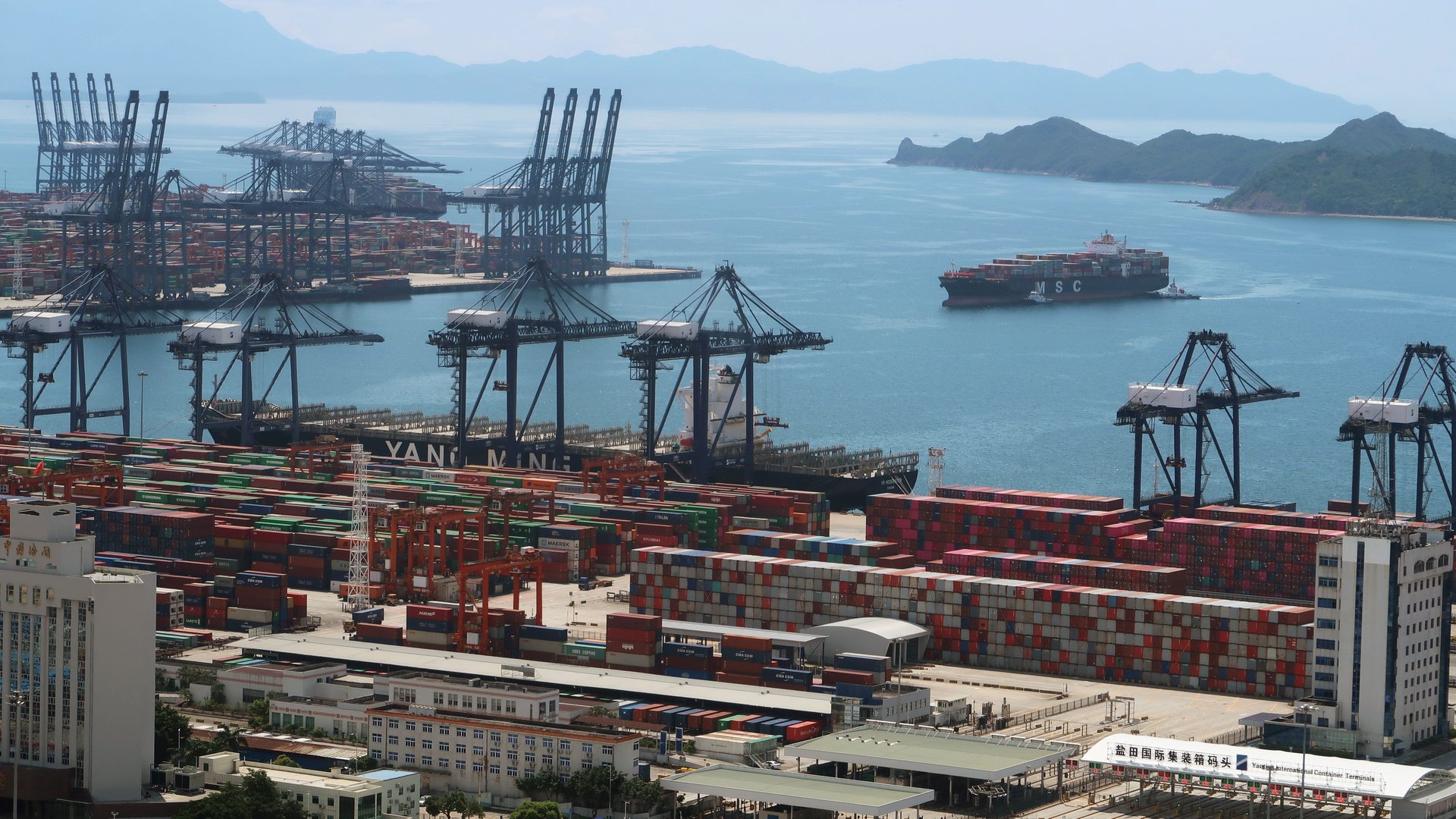China’s lockdown of its tech hub is bad news for the Fed’s fight against inflation
China locked down Shenzhen, its tech hub and second biggest port, and imposed severe curbs on Shanghai, its biggest port, as nationwide cases doubled in a day. But what is being called China’s worst outbreak in two years still refers only to 66 new cases registered on Mar. 13 in Shenzhen, a city of 17 million people, and 65 cases in Shanghai, a city of nearly 25 million.


China locked down Shenzhen, its tech hub and second biggest port, and imposed severe curbs on Shanghai, its biggest port, as nationwide cases doubled in a day. But what is being called China’s worst outbreak in two years still refers only to 66 new cases registered on Mar. 13 in Shenzhen, a city of 17 million people, and 65 cases in Shanghai, a city of nearly 25 million.
In Shenzhen, all non-essential workers must stay home—which means that the factories making iPhones, semiconductor chips, computers, and other tech products will not function for a week. Shenzhen’s free trade zone will shut down. In a note to its customers, the supply chain firm SEKO Logistics, which has an office in Shanghai, warned: “No cargo will be able to load in [Shenzhen’s port] Yantian from next week and vessels most likely will omit the port.”
The weeklong curbs on both manufacturing and shipping in Shenzhen present bad news—for supply chains that are still struggling to return to pre-pandemic performance, and for prices, which will rise as product supplies temporarily dry up. And they complicate the Federal Reserve’s fight against inflation, as it prepares to start hiking interest rates next week.
The return of transitory inflation?
The Fed has been charting its plans to raise rates—and signaling them—at least since December. But those plans will be affected by new volatilities. For one, the Russian invasion of Ukraine has sent prices of commodities like oil, coal and wheat soaring. It’s difficult to tell whether these effects of the war are here to stay, or whether they will dwindle in the event of a ceasefire or increased oil exports from Venezuela or the passage of winter into spring in Europe.
Similarly, China’s new covid-19 restrictions offer fresh uncertainties. At the moment, Shenzhen’s lockdown is expected to last only a week—which would make its effects on inflation transitory, to use the erstwhile word of choice of Fed chair Jerome Powell. Shenzhen may also yet find ways to keep its port operational, as the district of Ningbo did earlier this year. On the other hand, a rapid spread of omicron combined with China’s unsparing use of covid-19 lockdowns may result in further disruptions in coming weeks.
The Fed thus has the unenviable task of figuring out whether or not to treat these developments as temporary upward shocks to prices, and how to factor them into its plan to hike interest rates. It also has to ensure that rising rates and steepling energy prices don’t combine to depress economic growth—or even lead to a recession, in the event that Russian oil exports are banned by more governments. The war was complication enough for the Fed; the last thing it needs was new trouble out of China.